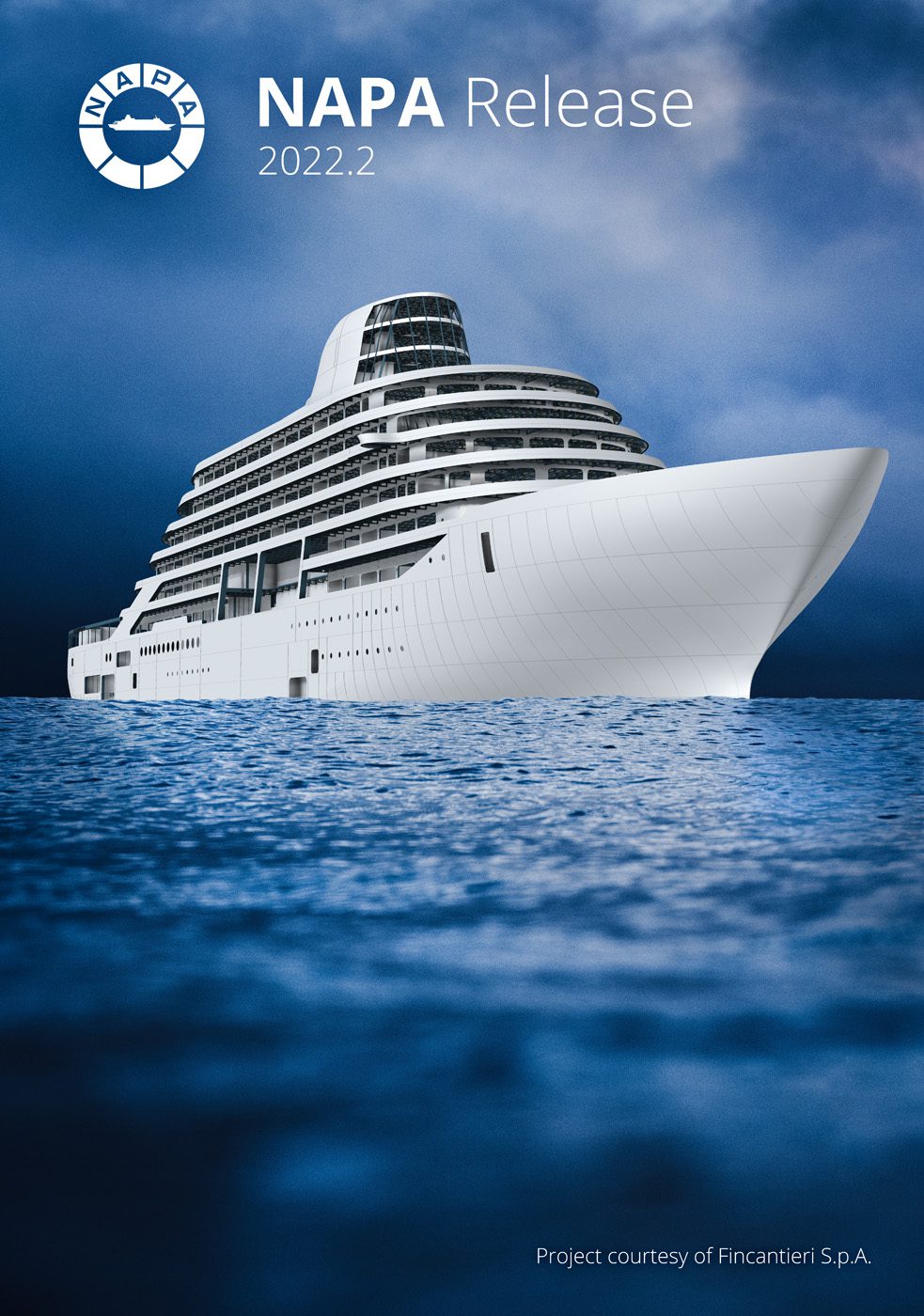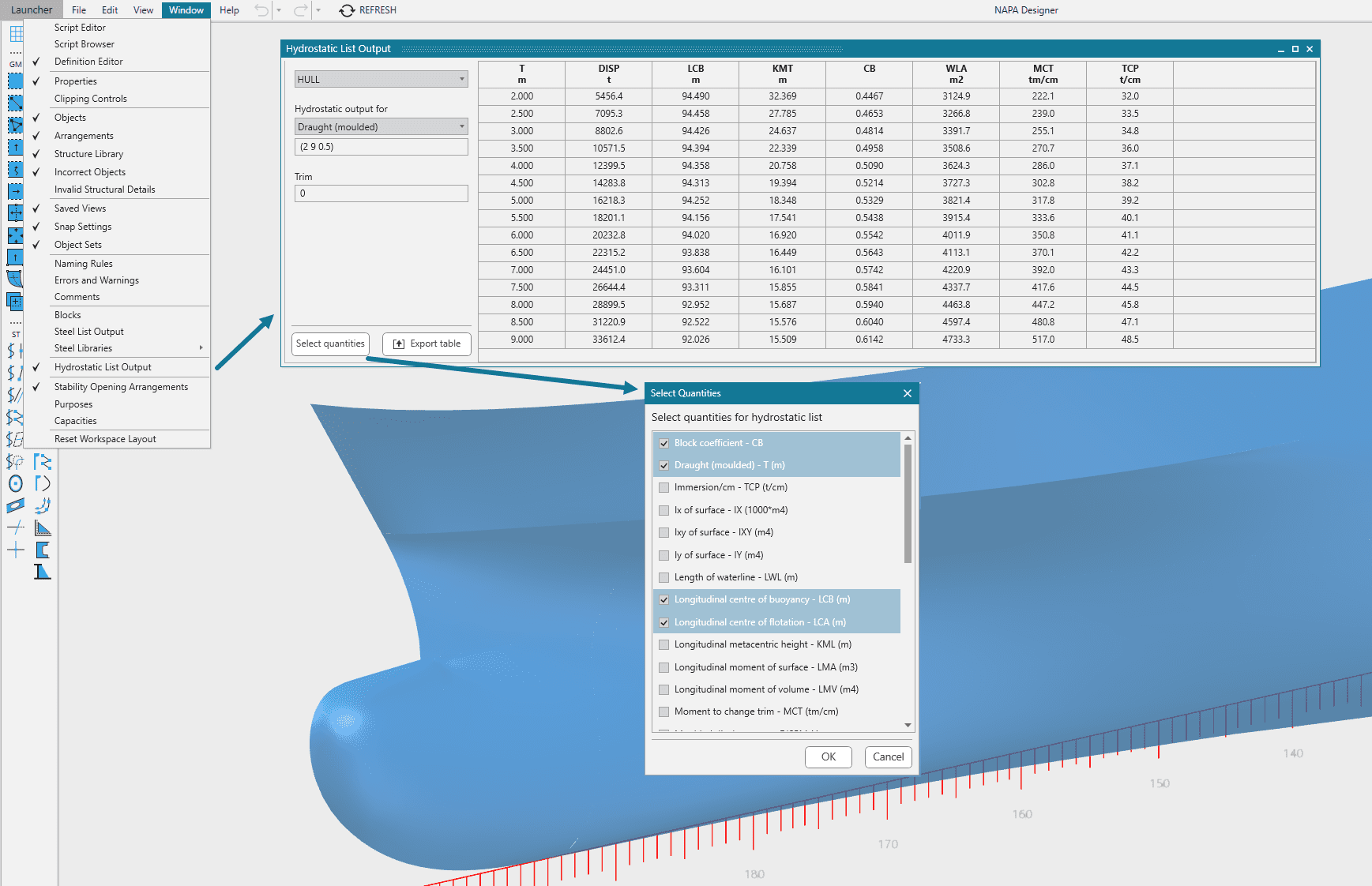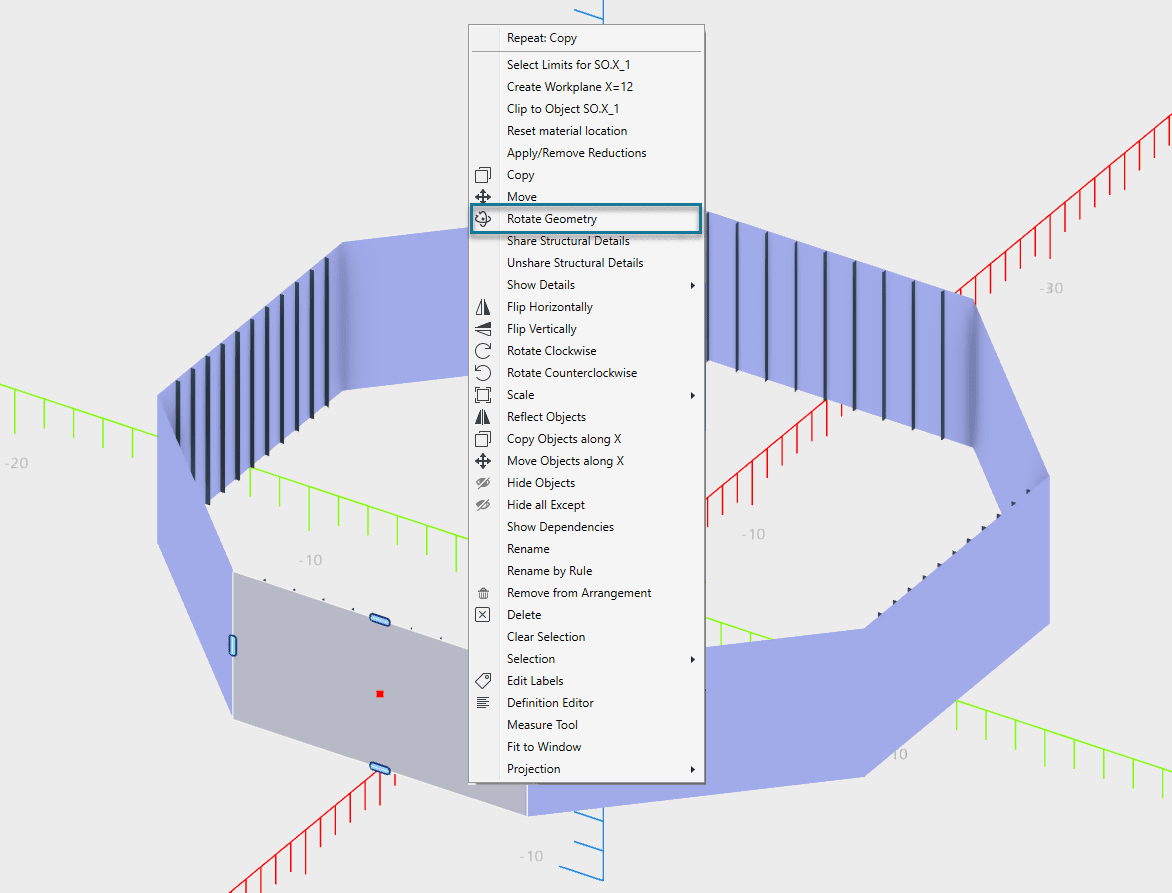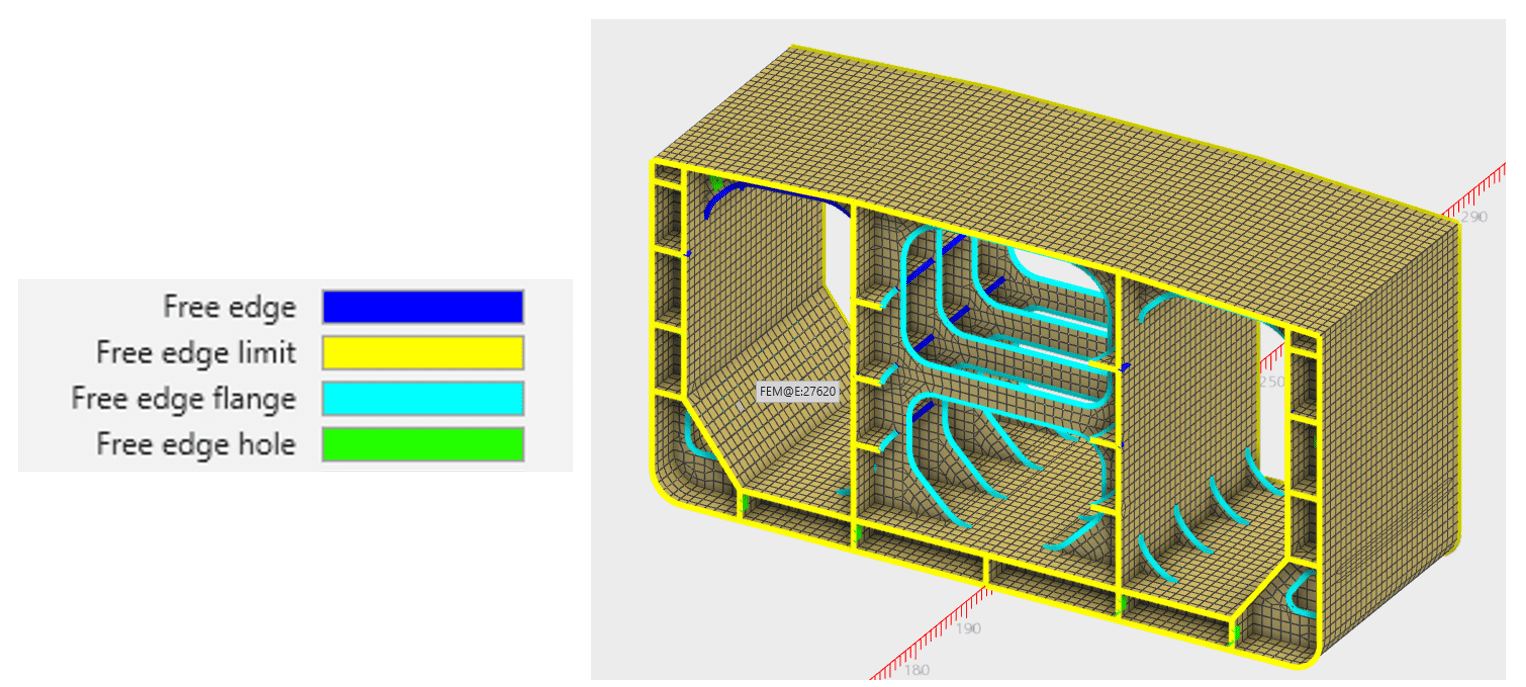December 22, 2022
NAPA Release 2022.2

The second NAPA Release of 2022 is now live!
All the changes in the software can be found in the NAPA Release Notes 2022.2 document, which is available in NAPAnet, with the installation packages.
In NAPA Release 2022.2, the main focus has been on the geometry and structure modeling and more efficient application functionality. Some of the highlights include:
- NAPA Designer’s toolset for loading conditions has been improved, partly based on the user feedback. NAPA Designer’s modeling experience has been amended with the direct hydrostatic results.
- The support for the IMO Polar Code damage stability assessment has been added.
- The detailed structural modeling tools of NAPA Steel in NAPA Designer have been improved.
- Finite Element Meshing has become quicker, boosting the whole FEM process.
Hydrostatics and Stability Calculations
Real-time hydrostatic results available in NAPA Designer
NAPA Designer’s 3D modeling environment has been amended with the direct hydrostatic result feedback, in order to boost the hull form and geometry modeling experience. The new tool provides the numeric hydrostatic results in real-time for the selected geometric object, e.g. for a hull surface.

Improved loading conditions toolset in NAPA Designer
The previous NAPA Release 2022.1 was published with a new toolset for creating and editing loading conditions in NAPA Designer. Now, we have made further improvements to usability and functionality. The new functionality includes for example a new lightweight definition tool, the visualization of relevant stability openings and a loading condition overview table. Please take a look at the video for more insights.
IMO Polar Code support added
All Polar Class ships need to withstand flooding resulting from hull penetrations due to ice impact, according to IMO Polar Code. The rule compliance analysis is based on the SOLAS II-1 regulation 7-2. The PROB Manager application of NAPA 2022.2 supports now the IMO Polar Code damage stability assessment, including the automatic generation of damage penetrations.

Structural Design
Easier, more efficient and accurate modeling
The functionality of NAPA Steel has been amended to support better more efficient structural design process and detailed needs.
Structural modeling has become easier, more efficient and more accurate. The new functionality for geometric definitions have been added in NAPA Designer, for example to support axis-rotational modeling with the rotation functionality of curves and surfaces. The new functionality becomes useful especially with the geometry and structural modeling of offshore structures, such as floating wind turbines. The inclined workplane is an essential concept when defining more specific shapes for objects. Now, the inclined workplane can be created based on any planar inclined object, to ease up the modeling.

The other new practical functionalities include for example the profile macro editor, improved priority handling in stiffener connections, and fine-tuned copy and move functionality of any objects.
Quicker finite element meshing
The finite element meshing (FEM) functionality is now quicker than ever before, speeding up the whole meshing process. The mesh check functions have been improved, in order to detect better for example any disconnected nodes/elements by highlighting free edges or missing topological areas. Also, the re-meshing of topological areas can be done easier than before which helps to adjust the automatically generated mesh for more accurate analysis.


The new FEM development in NAPA Release 2022.2 includes also improved priority handling for better mesh, a quick select tool for FEM entities, advanced element selection from 3D graphics, a copy FEM traces tool and general improvements to load definition tools.
Read and learn more about the benefits of FEM in the early design phases:
The devil is in the details – why early FE analysis is essential?
NAPA webinar recording: Achieve better designs quicker with NAPA FEM
New and updated interfaces
The integration between NAPA and different exchange file formats and other software has been improved, in order to assist efficient design work. The interface for the neutral file format OCX has been improved to support more extensively the different structural element types, such as pillars, together with several quality improvements. The traditional file format interfaces have been improved: The DXF import functionality is more accurate and the IGES import control is better.
We have been also working to connect NAPA Designer better with the classification society rule calculation software:
- NAPA Designer has now the functionality to fetch results back from ABS Eagle UDM (Unified Data Model). Previously NAPA Designer has supported the ABS Eagle UDM export for the rule calculation.
- The structural model can be exported in the form of the cross-sections to CCS SSD for the rule calculations, by using NAPA Designer.
- The local rule calculation results from the prescriptive part of KR SeaTrust-HullScan can be exported, and further read in NAPA Designer, in order to compare the results to the properties of NAPA Steel structural model. The NAPA Steel model can be further updated automatically in case of any differences.
Thank you for reading and Season’s Greetings from NAPA!